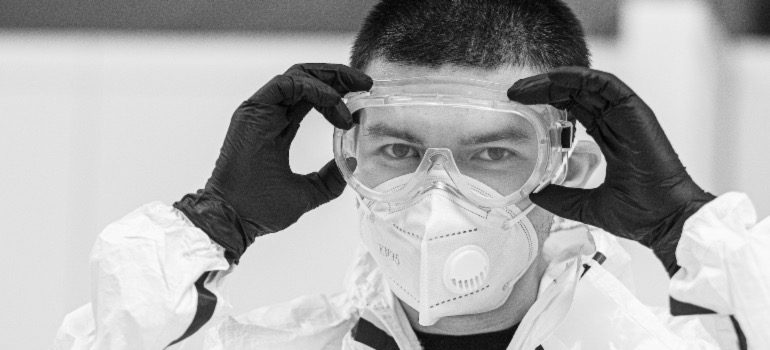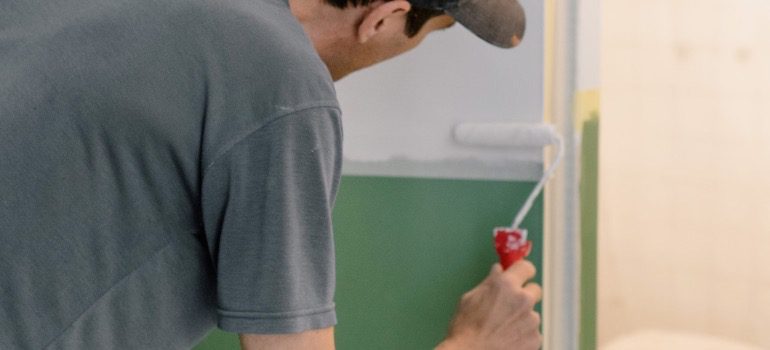Emphasizing the importance of contractor safety in painting projects is crucial. As a professional painting contractor, you’re not just responsible for delivering high-quality work; you must also ensure the safety of both yourself and those around you during the execution of each project. That requires more than just the basic knowledge of painting; it involves understanding potential hazards, appropriate usage of safety equipment, and implementing strict safety procedures.
Safety practices in painting projects aren’t merely a recommendation; they’re necessary, contributing significantly to your projects’ successful and efficient management. These practices help mitigate the risks of accidents, injuries, and health complications, often severe and sometimes fatal. Properly understanding safety procedures also boosts your credibility and professionalism in the industry.
Understanding the Risks in Painting Projects
Recognizing potential hazards is a fundamental step toward achieving a safe work environment. In painting projects, several risks loom.
- Falls – One of the most prevalent hazards in painting projects is falls. These can occur due to unstable ladders, uneven flooring, or even tripping over misplaced tools. You should pay special attention to ladder safety and maintaining a tidy workspace;
- Chemical Exposure – Paints and solvents contain chemicals that can harm the body if improperly handled. Inhalation, ingestion, or skin contact can lead to health issues ranging from minor irritations to severe respiratory problems;
- Fire Hazards – The flammability of certain paint products poses a fire risk. It’s critical to manage these materials properly to prevent any fire outbreak;
- Ergonomic Hazards – Prolonged repetitive motions, awkward postures, or heavy lifting can lead to musculoskeletal disorders over time. Proper ergonomics and regular breaks are necessary for the health of the painting contractors.
Understanding these risks is the foundation of contractor safety in painting projects. Consequently, acknowledging these hazards and implementing preventive measures are key to ensuring a safer workspace.
Essential Safety Equipment for Painting Contractors
A painting contractor’s toolkit isn’t complete without essential safety equipment. While it’s great to have the necessary tools for the painting job itself, those are simply not enough. Among the must-have tools, protective clothing, respirators, and safety goggles are non-negotiable. Additionally, for high-level work, harnesses are mandatory. Equally important is the proper use and maintenance of this gear. Ultimately, wearing and caring for this equipment could make the difference between safe operation and serious injury.

Proper safety equipment is paramount during a painting project, from safety goggles to face masks.
Safe Handling and Disposal of Painting Materials
A big part of efficient project management is incorporating best practices for handling and disposing of painting materials. Every step counts, from organizing the correct storage plan to ensuring proper ventilation. Moreover, suitable disposal methods of used materials are crucial in preventing environmental hazards.
Utilizing a Storage Unit
One important consideration often overlooked is the use of a storage facility unit. Proper storage not only helps in maintaining the condition of your painting materials but also prevents potential accidents. Experts from bigmansmoving.com also advise considering tactics to help maintain a clean, well-organized storage unit. That can help minimize the risk of spills or mishaps due to misplaced materials.
Importance of Proper Training
If you’re just starting a painting business, training is paramount. Training should cover topics such as proper equipment usage, hazard recognition, and emergency procedures. Continuous professional development enhances safety, equipping painting contractors with the latest best practices.
Implementing Safety Protocols and Regular Inspection
A comprehensive safety protocol is essential in painting projects. If you couple this with regular inspections, this strategy ensures a safe work environment. Remember, safety protocols aren’t static – they require adaptation to each new project.

A great practice to ensure contractor safety in painting projects is having a written safety protocol checklist for every job.
Steps to Take in Case of Accidents
Despite the best precautions, accidents can happen. In such cases, a clear and efficient emergency response plan is crucial. Here are some steps to include in your plan:
- Immediate Care – The first and foremost step is to provide immediate care to the injured person. That could include administering first aid or calling for medical help if the injury is serious;
- Alert Authorities – Depending on the severity, it might be necessary to alert local authorities. Always ensure that you inform the proper authorities following local regulations;
- Document the Incident – Record details about the accident as soon as possible. That will aid in any subsequent investigations and can be crucial in preventing similar incidents in the future;
- Analyze and Learn – It’s important to analyze what went wrong once you deal with the immediate emergency. Learning from mishaps is crucial for enhancing safety measures;
- Communicate – Following the incident, hold a briefing with the team to communicate what happened, what was done, and how similar accidents can be avoided.
Remember, swift action in the aftermath of an accident can mitigate harm and prevent minor mishaps from escalating into major accidents.
Make sure to meet with your team and discuss what happened, if an accident does occur.
Best Practices for Contractor Safety in Painting Projects: A Checklist
To ensure you stay on track, here’s a checklist of the best practices discussed in this blog post:
- Recognize potential hazards,
- Equip yourself with must-have safety tools,
- Handle and dispose of painting materials safely,
- Prioritize continuous training,
- Implement comprehensive safety protocols,
- Prepare an emergency response plan.
Using it should help keep safety at the forefront of your work.
Conclusion
We can’t overemphasize the importance of contractor safety in painting projects. So, from recognizing risks to implementing safety protocols, every step plays a crucial role. With this guide, we hope to see a safer work environment for all painting contractors. Safety comes first, always.


I never spray paint, so I don’t have to worry much about particles or fumes. I try to keep some ventilation no mater what kind of paint or clear finish I use. Because I am in my 60’s, I am ultra careful on ladders. Double tie those shoestrings. Soft ground and shoestrings, at least in my experience, are the fall/trip hazard.